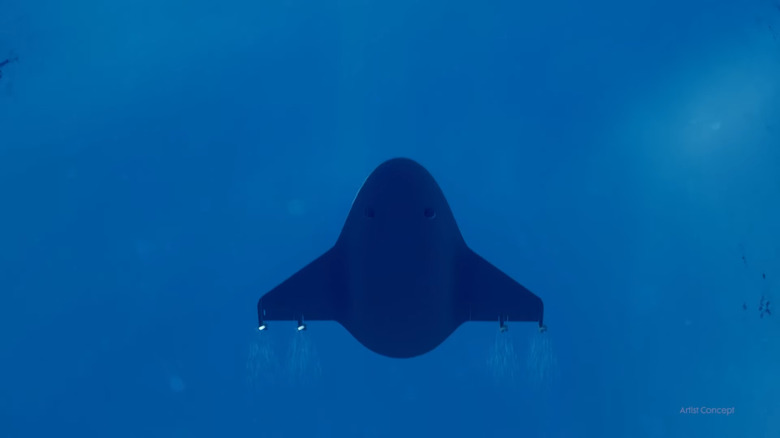DARPA's Mysterious Manta Ray Could Be The Future Of Underwater Drones
A new underwater drone could let long-range military missions hide in plain sight. Northrop Grumman built the craft for the Defense Advanced Projects Research Agency (DARPA), and it will be capable of harvesting energy from the seas. The Manta Ray, as the craft is known, has been in the making for four years.
What makes the craft so exceptional is the fact that it is designed to address biofouling and the corrosion of sea life. The unmanned craft takes its design and name from one of the most spectacular creatures of the sea, and the hope is that it will address the complex nature of undersea warfare.
It's the fact that the Manta Ray drone is designed to work autonomously for long periods of time that makes it such an intriguing development, too. Because it can generate its own energy from the ocean around it, and it is made to mimic the design of a real-life creature, the Manta Ray could theoretically go under and not come up for months at a time.
It must also use minimal amounts of energy to make it more efficient at what it is doing. Based on images shared by DARPA, as well as a video, the drone seems to gather energy from nearby waves, which it then feeds into its batteries, allowing it to work without human intervention.
Of course, the Manta Ray drone still has to deal with the whole batteries eventually dying and needing to be replaced issue. Still, considering how long batteries can last without being changed, it shouldn't have much issue doing just that. It also might include a built-in solar array, allowing it to harvest energy from the sun, too.
There is, of course, no shortage of missions where a drone like the Manta Ray might make sense. It and other robotics that engineers have designed — like the robot that melts after it completes its mission — are all geared towards doing more for military purposes than anything else. But I can't help but see the possible scientific benefits of a drone like this, too.
